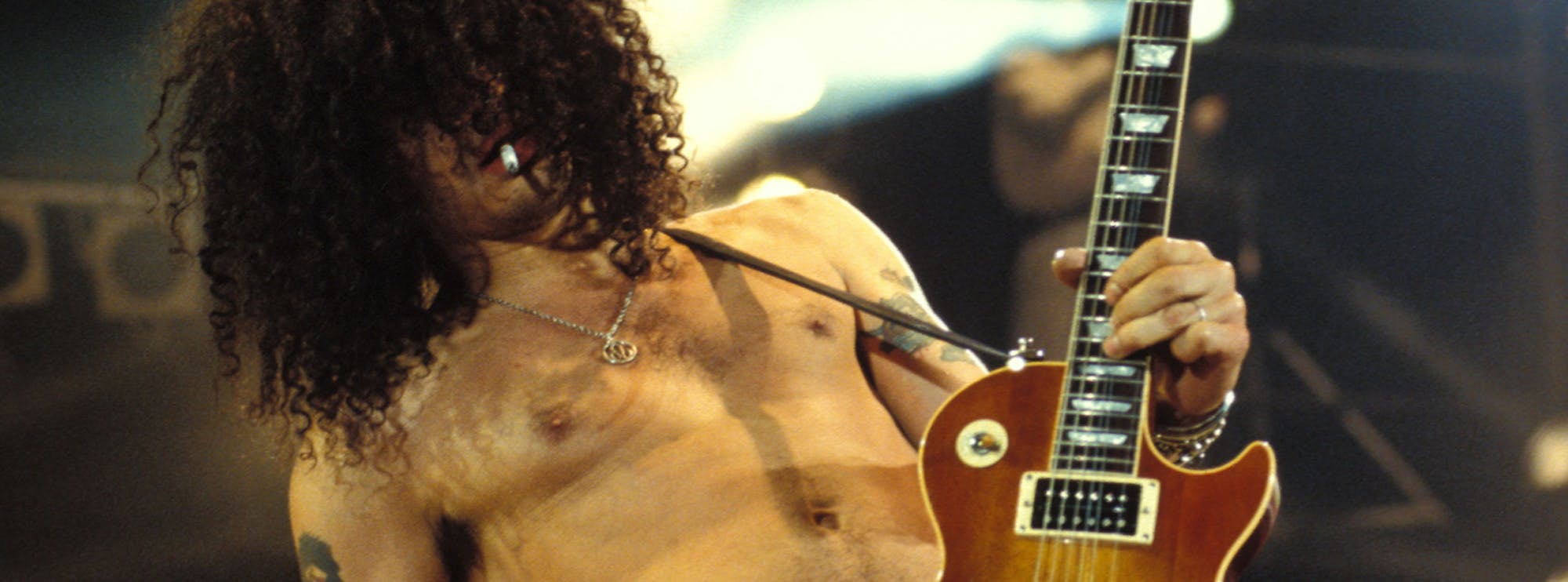Beat It (Guitar Solo Section)
Michael Jackson's iconic "Beat It" is not only a pop masterpiece but also a classic in the world of rock guitar, thanks to its explosive solo section. In this Beat It (Solo Section Only) guitar lesson, we provide a detailed breakdown of this legendary solo, focusing on the techniques that made it unforgettable. Played by guitar legends Eddie Van Halen and Steve Lukather, this solo is a masterclass in rock guitar virtuosity, offering a wealth of techniques that will expand your skillset.
This lesson emphasises specific guitar techniques used in the solo, making it perfect for players looking to add new skills to their repertoire. Below, we'll dive into the key techniques featured in the solo and explain how mastering them will improve your playing. Jamie Humphries breaks down this iconic solo in this exclusive Lick Library video tutorial.
About the Guitarists: Eddie Van Halen and Steve Lukather
The solo in "Beat It" was performed by Eddie Van Halen, while the rhythm guitar work was laid down by Steve Lukather of Toto. Eddie Van Halen, renowned for his revolutionary two-handed tapping and energetic style, is often credited with reinventing rock guitar in the late '70s and early '80s. His work on "Beat It" is no exception, showcasing his signature fiery techniques like two-handed tapping, whammy bar tricks, and rapid alternate picking.
Steve Lukather, a studio veteran and guitar virtuoso in his own right, contributed heavily to the rhythm tracks and underlying harmony, offering his impeccable timing, precise playing, and creative use of power chords and arpeggios. The combination of these two guitar giants helped create one of the most recognised rock solos in music history.
Key Techniques in the "Beat It" Solo
Two-Handed Tapping
Eddie Van Halen’s two-handed tapping is a cornerstone of the "Beat It" solo, giving the section its trademark fluid, cascading sound. This technique involves using the fingers of your right hand to "tap" notes on the fretboard, while your left hand holds down frets, creating rapid-fire sequences that would be difficult to achieve with traditional picking.
Benefits: Mastering two-handed tapping will significantly increase your speed and dexterity. It allows for highly expressive playing and opens up a wide range of possibilities when creating your own solos. Plus, it enhances finger independence, making you a more versatile player.
Tremolo Picking
Tremolo picking is used during some of the more intense moments of the solo. This technique involves picking the same note repeatedly at high speed, often creating a dramatic, tension-filled sound.
Benefits: Tremolo picking helps improve your speed and endurance with the picking hand. It’s great for building stamina and precision in both fast passages and longer note sequences.
Harmonics and Pinched Harmonics
The solo in "Beat It" utilises natural harmonics and pinched harmonics to produce those signature screaming high notes. Harmonics are achieved by lightly touching the string at specific points on the fretboard while picking, whereas pinched harmonics involve a slightly different picking technique that emphasises certain overtones.
Benefits: Learning harmonics will add depth and variety to your guitar sound. Pinched harmonics are particularly useful for punctuating solos and adding high-pitched squeals to your riffs.
String Bending and Bluesy Bends
String bending is featured throughout the solo, giving it a distinctive vocal-like quality. Van Halen also incorporates bluesy bends, where the string is bent slightly out of pitch to create a bluesy, emotive feel.
Benefits: Mastering string bending improves your control over pitch and expression. It's an essential tool for adding personality to your solos, allowing you to play with greater nuance and emotion.
Whammy Bar Tricks and Dive Bombs
The use of the whammy bar adds an extra layer of flair to the solo. Eddie Van Halen uses this technique to create dive bombs, where the pitch of the note dramatically drops after being struck, resulting in a sudden, swooping sound.
Benefits: Whammy bar techniques like dive bombs can greatly enhance the drama and dynamics of your playing. They are a great way to inject excitement and unpredictability into your solos.
Alternate Picking
Throughout the solo, there are rapid runs where alternate picking is essential. This technique involves alternating between downstrokes and upstrokes, allowing you to play fast sequences smoothly.
Benefits: Alternate picking is crucial for achieving speed and accuracy in fast passages. Mastering this technique will enable you to play intricate solos more fluidly and with better timing.
Vibrato
Vibrato is used in the solo to add sustain and expressiveness to held notes. By oscillating the pitch of a note slightly, vibrato gives your playing a "singing" quality and helps notes stand out.
Benefits: Vibrato adds a professional, polished touch to your playing. It allows you to control the emotional intensity of a note and is an essential technique for creating a more dynamic, engaging performance.
Slides and Legato
The solo also features slides and legato passages, allowing for smooth transitions between notes. Slides provide a sense of fluidity and connection, while legato techniques (hammer-ons and pull-offs) help maintain speed without excessive picking.
Benefits: These techniques improve the flow and smoothness of your playing, reducing the need for continuous picking and enhancing your ability to play fast, connected phrases.
Guitar Techniques Used in This Lesson
- Two-Handed Tapping
- Tremolo Picking
- Harmonics
- Pinched Harmonics
- String Bending
- Bluesy Bends
- Whammy Bar Tricks
- Dive Bombs
- Alternate Picking
- Vibrato
- Slides
- Legato
About The Tutor
Tutor Profile
Jamie Humphries
Jamie is one of the mainstays of LickLibrary, having a stream of hugely successful best selling DVDs, Jamie is best known as Brian May's sideman who he's played shows with all over the world. Aside from this Jamie is a hugely popular clinician working all over the world with Ernie...




